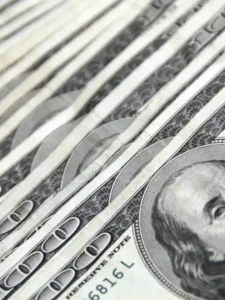RBI Governor Shaktikanta Das said, “We may have to consider OMO sales.”
Why Open Market Operations (OMO) sales are considered tactical at this point? What is OMO? What impact do OMOs have on the economy? How does the money supply change due to OMOs? Why do OMOs impact bond yields and exchange rates?
Find answers to these questions in this video.
Sources and Further References:
Many Faces of OMOs, Tamal Bandyopadhyay
How RBI’s Potential OMO Bond Sale Is A Plan To Hit Three Birds With One Stone, Outlook Business
Open market operation, Wikipedia
TRANSCRIPT / EXCERPTS
Every two months, RBI Governor Shaktikanta Das appears on our screens. People react to it – some are happy, some sad, and some nonchalant. Not only people, but stock markets and bond markets react too. So, what’s the fuss all about?
In this very new episode, we are going to understand it. Obviously, not everything. Let’s take some baby steps. Today, I will talk about open market operations also called as OMOs.
In the last monetary policy meeting, something around OMOs was announced. What was that about? And people wrote saying that RBI is killing three birds in one stone. So, let’s understand this in our segment called ‘Theory Meets Reality’.
Hi, I am your host Swapnil Karkare, a Chartered Accountant and an Economist and I am here to simplify economics and finance for you.
Before talking about what was announced in the monetary policy meeting, let us go back to basics.
What is an open market operation?
Let’s assume you have a suitcase. It’s filled with bundles of rupee notes. Not full… let’s say half. Now, depending upon what kind of person you are – you may treat it as half full or half empty..but bear in mind, that there’s some space to keep more bundles of notes.
Now, let us also assume that you have a big folder too… filled with some documents. But those documents are of assets owned by you. That means that folder is worth too.
Now, let us say there’s another person, who is watching you..what you do with this money all the time. Maybe, it is your partner or parent or a friend.
You have many expenses lined up and you will probably need more money. You go to that person and ask them if they can lend you some money. They agree but they don’t want to just hand it over for free. They want interest in it. You agree for interest. But they doubt if you can repay them and so, they ask for some security against that loan. Even if they are parents, It’s a kalyug! Right?
So, you hand over one valuable document from your folder to them and in return borrow some money. You do this all the time whenever you need more money.
After some days, you repay them and get your documents back too.
What you do with this money. You spend on different things. But you also lend it to your other friends. So, quantity of money in your suitcase will also depend on whether your friends repay you.
That other person becomes cautious one day because it has gathered some information and feels that you should not be lending so much now.
So, what do they do?
If it was actually your parents, and that too Indian parents, they would have slapped you and ordered you to not do it. But here we are talking about something else and I hope that you have realised, what it is. So, that person, would, instead of telling you not to do this or do that, offers you to buy another piece of asset, similar to the one you already have in that folder. This time, the interest rate on that asset is higher, so that you get attracted to it instead of lending it to your friends.
So, you give them money and then own that asset. Now, you have lesser money to lend.
That person, is nobody else than the RBI itself…and you represented all the commercial banks.
The entire process is called open market operations.

In short, when RBI wants to remove money out of the system, it will offer attractive interest rate on govt securities, so that commercial banks invest in it…and thus, the money available to lend to you or I or companies, is now lesser, as the banks have invested some of it in the bonds. So, that means, money supply in the system has decreased..or we can also say that the liquidity has decreased.
What happens when money supply reduces or the commercial banks start lending lesser money…? As per basic demand supply logic, when the supply of money reduces, its price will increase. Here, interest rate, is the price of money. When interest rates rise, it pinches us. Because our EMIs increase…and thus, we don’t spend as much as we were spending earlier. When you, i, your neighbours and many people like us don’t spend, it reflects in the economy.
You will see that demand in the economy has gone down…which will in a way, have a downward pressure on prices. Because, as per the law of demand, when demand of goods decreases, and other things are constant, the prices of goods will also decrease.
So, in this way, RBI controls inflation. This is called as OMO sale..because, the RBI is selling the govt securities to banks.
If RBI wants to increase the demand in the economy, that is it wants to pump up the economy or push the prices upwards, then RBI will buy the govt securities from banks. That means, RBI will give money to banks for the security. Banks will have ample of money in their pockets and then they will be ready to lend to us in more quantities. That means the supply of money is now more. When supply is more than demand, prices fall. That means, the interest rates fall in such scenarios. This is good news for us as we all will start borrowing money from banks and spending it on different things that will stimulate the economy.
This is called OMO purchases.
OMO sales is to reduce inflation while OMO purchases is to stimulate demand.
Both the things done in excess and for prolonged periods, can harm economy in different ways. If OMO sales are done too much and for too long, there is a chance that we go into a deflation scenario that can also lead to recession. OMO purchases done in excess and for longer time can be very inflationary.
So, both the things need to be done properly and that’s the main job of the RBI – to manage liquidity in the system.
Although OMOs are used for liqudity and inflation management, it has impacts on other things as well, like bond yields and currency.
Let us find out how.
In our example, i referred to a folder full of documents. Those documents are nothing but bonds held by commercial banks. So, when that person sells one document to you, that means, there are now more documents in the folder…which means, more bonds in the market. That means, When RBI is selling bonds to decrease money supply, it, in a way, increases the supply of bonds.
If the supply of anything increases, prices will tend to fall. So, the bond prices fall. But bond prices and yields are inversely proportional to each other. When prices fall, yield rises and vice versa.
Bond yields are quite different from the interest rates also known as coupon rates that you receive if you are holding a bond. There is some math in it, which i might deal with in some other episode. Right now, let us agree with the theory which says that there is an inverse relationship between bond prices and yields.
So, basically, what are we saying is that when the RBI does OMO sale, bond yields go up.
Similarly, if RBI buys bonds, it will reduce the supply of the bond in the market, which will increase the price of the bonds and thereby reduce the yield.
So, in this way, OMO operations have an impact on the bond yields too.


Then, there is another impact of OMO…and that is on the currency.
Lets say RBI is buying bonds, which means the money supply is increasing. and money supply within India, will obviously be of Indian Rupees only, right? So, we can say that, INR supply is increasing.
What we know about supply so far…is that when supply increases, price decreases. That means, INR value will decrease…or as we usually say INR will depreciate.
If RBI is selling bonds, then it is reducing the supply of INR in the market…and thus, it will increase the value or appreciate the rupee.
This is the third effect.
This is more theoretical. Here, we assume that nothing about the USD or EUR changes. So, there is another effect on the currency, which depends on what is happening in US or other nations. So, let us understand that as well.
Let us say that the US yield is around 4% and the Indian yield is around 8%, the gap or the spread is 4%. If US yields do not change and because of OMO sales by RBI, Indian yields go up to, say, 10%, then, the spread widens from 4% to 6%.
What will happen in this case?
Since Indian bonds became more attractive than US bonds, just on the basis of their yields, investors will start pouring money into India to buy our bonds. That means Indian rupees will be in high demand. And we know that when the demand increases, the price increases too. That means the rupee will appreciate.
Now, appreciating the rupee means our imports will be cheaper, while our exports will become expensive.
This was the first case.
What if US yields go up?
For example, US yields rose from 4% to 7% and Indian yields are at 10%. That means the spread is now only 3%. Investors might feel that investing in the US could now be profitable. So, a lot of investors will divert their money from India to the US. This will result in lower demand for INR.
That means INR will not appreciate much. It can still appreciate, but not much. If the demand for INR falls, then it will start depreciating.

Now, let’s hold on for a moment and understand this theoretical relationship with what happened in the previous monetary policy meeting.
This is what RBI governor said in his speech on 6th October 2023.
“we may have to consider OMO-sales (Open Market Operation sales) to manage liquidity, consistent with the stance of monetary policy. The timing and quantum of such operations will depend on the evolving liquidity conditions.”
Tamal Bandopadhyay, a veteran columnist and author, in his recent article on LinkedIn, has elaborated on how RBI uses OMO as a tool for not only managing liquidity but also yields and currency. To be honest, I was inspired to write and do this video after reading his article.
He writes, “When the RBI announced the plan to sell bonds through OMO in the last policy, the 10-year bond yield jumped 12 basis points (bps) — from 7.23 per cent to 7.35 per cent.”
That’s how this jump was. Bond yields usually do not have a volatile reaction like a stock. So 12bps jump is huge in just a few hours.
He writes about how YV Reddy used OMOs in 2005 and then how Subbarao used it in 2012. I would recommend you to read them if you are interested in knowing it deeper.
That’s the second effect we discussed.
Then he talks about what impact it can have on yield spreads and thereby the currency, that’s the third effect.
He writes, “With the US 10-year paper yield inching towards 5 per cent last week, the highest since July 2007, the spread has shrunk to 2.41 percentage points, a level last seen in April 2006.
The lowest ever spread between US and Indian 10 government bonds is 0.61 percentage points, recorded in 2004. In the past two and a half decades, the average spread has been 4.64 percentage points and the highest, 6.94 percentage points, was recorded on May 31, 2012 (1.56 per cent US 10-year yield vs 8.5 per cent Indian 10-year bond yield).
As the spread or the difference between the Indian and US bond yields shrinks, foreign money flow into India slows down; the investors find US bonds more attractive and, consequently, the local currency comes under pressure. The OMO sale will address the rupee depreciation against the dollar.”
That’s what he wrote.
Basically, what he is trying to explain is that – We have seen that OMO sales have an appreciating effect on currency, at least in theory, if there is no change in US yields. But we have also seen that if US yields increase, then the effect is uncertain. It depends on how RBI tackles the situation.
He is saying that strategically, the idea of RBI to go ahead with OMO sales is good, in theory.
Now then, let us see how that has played now.
By the way, this article was written on 23rd October 2023.
As of 8th November, that is at the time of making this video, the 10 year Govt security yield of Indian bond was 7.271% and that of US was 4.589%. The spread is 2.682. In the Tamal’s article, he mentioned that the yield spread was 2.41% pt. Now it has widened a bit.
And as of 8th November, INRUSD was 83.289. On 5th October, that is before the monetary policy announcement, the rate was 83.2. So, clearly, there is still downward pressure on rupee.
Therefore, it means, that RBI will have to do much more to control the depreciation of rupee.
The currency effect is a bit complex since currency is impacted not only by bond yields or OMOs. There are multiple other factors such as oil prices, RBI’s intervention in forex markets, market conditions, inflation, state of economic growth in both India as well as US and world economy, etc.
So it is difficult to say if RBI’s measures had positive or negative effects on currency or not.
Nonetheless, these are the usual implications of OMOs.
I hope you liked this episode. Tell me what other stuff you would like to listen to on this platform. My purpose was to simplify complicated economic and financial stuff around us. I will start posting more videos – at least once every week.
If you like the channel, subscribe to my channel, click the bell icon so that you never miss an update. You will find a bunch of links in the show notes on this topic. You will also find my social media links below. Follow me on those platforms. I have some podcasts too which you can listen to on any leading podcasting app. If you like my work and would like to support me, there is a link in the description, where you can be a part of the production of this show too.
See you next week. Bye bye.







